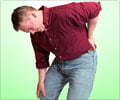Yoga may be more effective than standard treatment in reducing chronic low back pain in minority populations, according to a new study.
Yoga may be more effective than standard treatment in reducing chronic low back pain in minority populations, according to a new study.
Individuals from low-income, minority backgrounds with chronic low back pain (CLBP) may be more affected due to disparities in access to treatment.Although many CLBP patients seek relief from complementary therapies such as yoga, use of these approaches are less common among minorities and individuals with lower incomes or less education.
For the study, researchers from Boston University School of Medicine (BUSM) and Boston Medical Center recruited adults with CLBP from two community health centers that serve racially diverse, low-income neighbourhoods of Boston.
They were randomly assigned to either a standardized 12-week series of hatha yoga classes or standard treatment including doctor's visits and medications.
As part of the trial, the researchers asked participants to report their average pain intensity for the previous week, how their function is limited due to back pain, and how much pain medication they are taking.
The yoga group participated in 12 weekly 75-minute classes that included postures, breathing techniques, and meditation.
Advertisement
Participants were provided with an audio CD of the class, a handbook describing and depicting the exercises, a yoga mat, strap, and block.
Advertisement
Whereas pain medication use in the control group did not change, yoga participants' use of pain medicines decreased by 80 percent.
Improvement in function was also greater for yoga participants but was not statistically significant.
"Few studies of complementary therapies have targeted minority populations with low back pain," said lead author Robert B. Saper, MD, MPH, an assistant professor of family medicine at BUSM and director of integrative medicine at Boston Medical Center.
"Our pilot study showed that yoga is well-received in these communities and may be effective for reducing pain and pain medication use," he added.
The study appears in the November issue of Alternative Therapies in Health and Medicine.
Source-ANI
SRM















